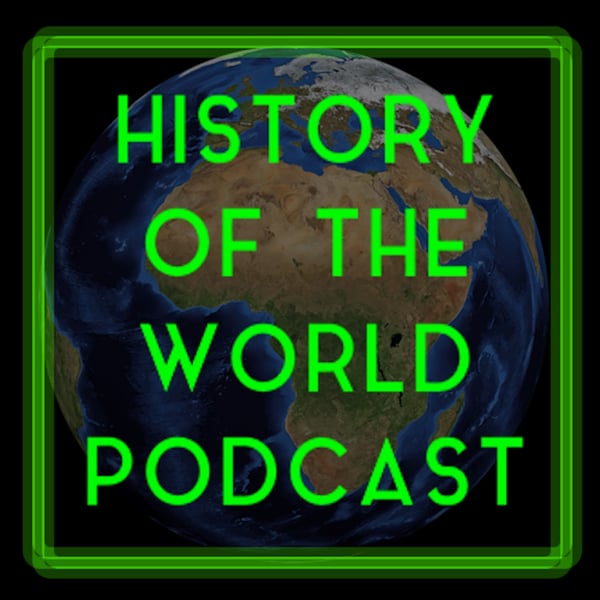Vol 2 Ep 27 - Mohenjo-daro
History of the World podcast
Chris Hasler
4.8 • 971 Ratings
🗓️ 28 July 2019
⏱️ 38 minutes
🧾️ Download transcript
Summary
Transcript
Click on a timestamp to play from that location
| 0:00.0 | This is the History of the World Podcast with me Chris Hasler |
| 0:06.0 | and this is volume 2 the ancient world |
| 0:11.0 | episode 27 mauhenjo daro Episode 27, Muhenjo Darrow. Oh, oh, oh, oh. Oh, oh. It would be correct to have a refresher of last week's episode as the City of Mehenjo-Daro has come to be known as the most |
| 0:46.1 | important site in terms of understanding the Indus Valley civilization. |
| 0:51.2 | Mahenjo-Daro is the home of Valley Civilization. |
| 0:52.7 | Mohanjo-Daro is the home of some wonderful secrets about the Indus Valley Civilization, but in order |
| 0:59.8 | for them to be understood with the deepest appreciation we should set the scene. |
| 1:06.3 | The Indus Valley civilization grew out of existing Neolithic populations in and around the Indus River Valley and the Indus River |
| 1:15.8 | system as well as the Gagahakra River. These lands were very fertile and fruitful due to the regular flooding that could be irrigated to bring water and silt to plowed fields. |
| 1:30.0 | This agrarian success would lead to the construction of granaries in order to store |
| 1:36.8 | surplus stock on which trade links could be built and there seemed to be enough to go around with very little evidence of power struggles |
| 1:45.9 | or military battles. Animal agriculture would be coupled with agrarianism. |
| 1:53.7 | Cattle could be used to draw plows and goods vehicles so that the mobility of the |
| 1:59.1 | Indus Valley merchants was good and that large amounts of goods could be moved around the different |
| 2:04.9 | settlements. With such agricultural and economical success the |
| 2:09.9 | Indus Valley civilization was able to attract a wealth of materials into their region, |
| 2:16.4 | allowing artisans to be able to achieve expertise in the use of ceramics, metals and gemstones to create desirable objects such as sculptures |
| 2:27.6 | and textiles, especially with the use of the cotton that they were able to produce. |
| 2:35.5 | Statues and sculptures of humans and animals were being created, but we believe that |
| 2:40.0 | there was less of a spiritual seriousness about these people compared to other ancient societies |
| 2:46.5 | due to a lack of palace and temple buildings. Some of the animal images were depicted on seal stamps that are accompanied by what looks to be a type of script that is yet to be deciphered. |
| 3:01.0 | Coastal Indus Valley communities would construct dockyards which would likely be the home of |
... |
Please login to see the full transcript.
Disclaimer: The podcast and artwork embedded on this page are from Chris Hasler, and are the property of its owner and not affiliated with or endorsed by Tapesearch.
Generated transcripts are the property of Chris Hasler and are distributed freely under the Fair Use doctrine. Transcripts generated by Tapesearch are not guaranteed to be accurate.
Copyright © Tapesearch 2025.

